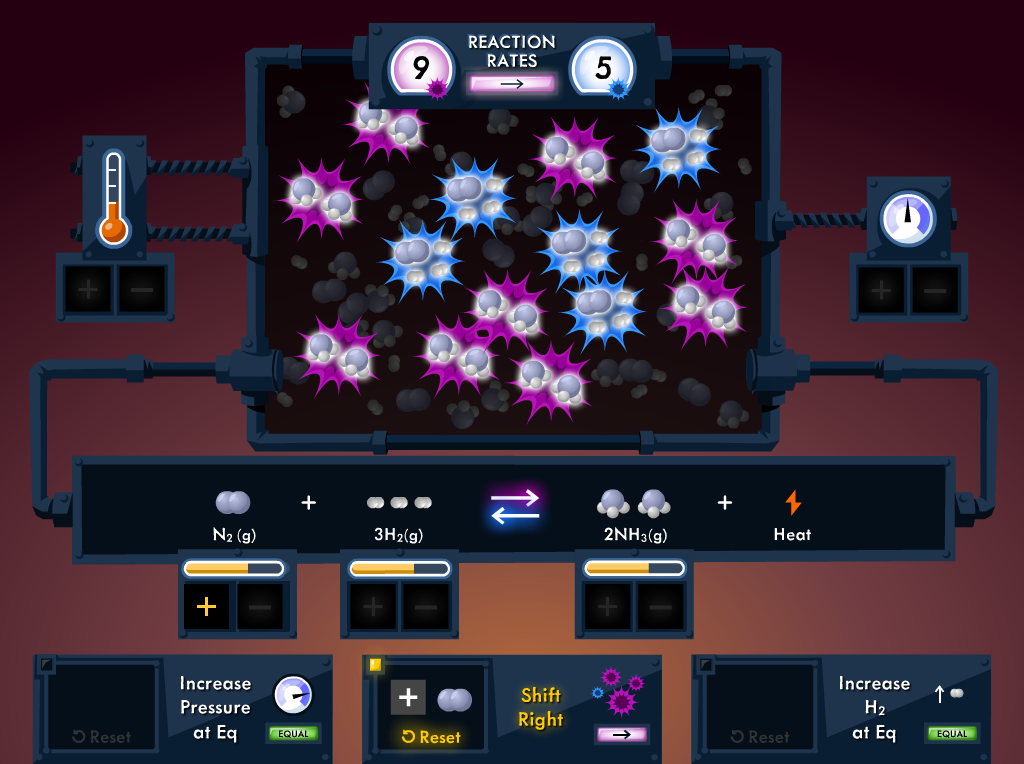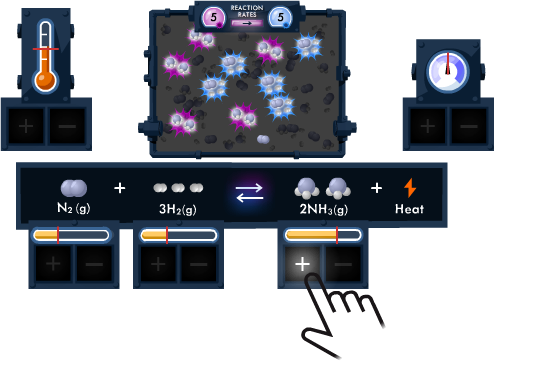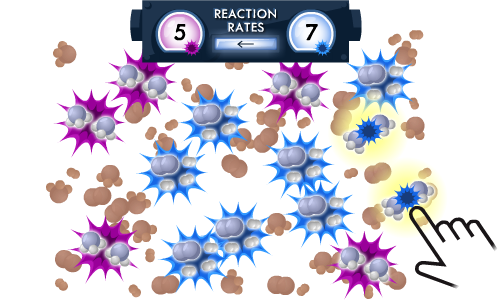Equilibrium Game
In the equilibrium game, players disturb reactions to shift equilibrium and cause changes in the system to match game targets.
Check out our Free Teacher Resources here!

Core levels

Players are presented reversible reactions at equilibrium, including gaseous systems and aqueous solutions. Players then disturb the equilibrium by changing a concentration, the temperature, or the pressure.

Players will shift equilibrium by changing the rate of forward or reverse reactions and shift equilibrium as governed by LeChatelier’s Principle.


Players will observe the system return to equilibrium with resulting changes in reactant concentrations, product concentrations, temperature and pressure to match game targets
Sandbox
The Sandbox provides an open-ended and exploratory environment for students to freely select a reaction, disturb it, and shift equilibrium. Design your own extension activities using the Sandbox and encourage your students to earn the built-in Achievements that focus on a specific topic within Equilibrium (i.e., the Haber process, dissociation of an ionic solid, changing the container size).
